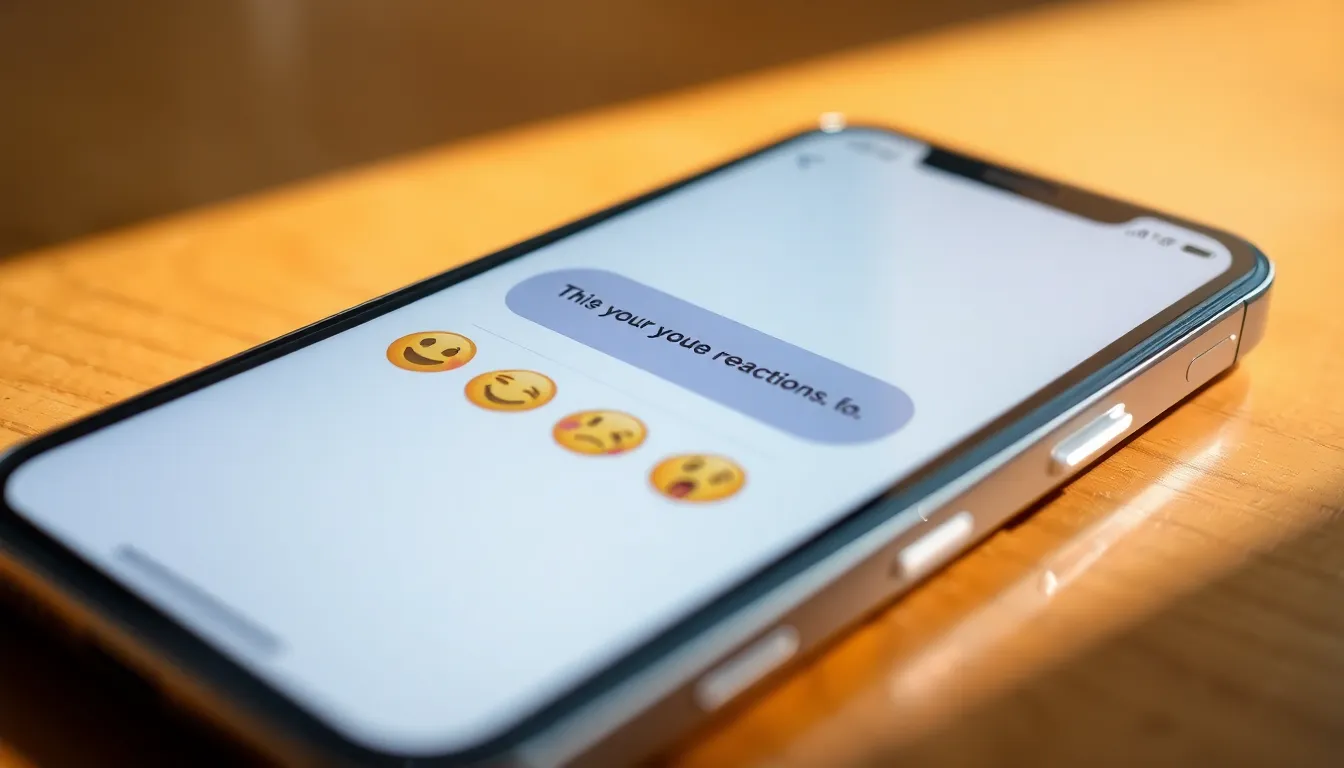Table of Contents
ToggleEver sent a text that had everyone buzzing, only to wonder who secretly gave it a thumbs up? If so, you’re not alone. In the age of instant communication, knowing who’s vibing with your messages can feel like a modern-day mystery.
Imagine the thrill of unlocking the secrets behind those little hearts and thumbs up in your messages. It’s like being a detective in your own social drama! With just a few taps on your iPhone, you can unveil who’s been secretly appreciating your witty banter or heartfelt messages.
Understanding Text Message Reactions
Text message reactions provide insight into how recipients feel about a conversation. Knowing who liked a message enhances engagement and deepens connections among friends and family.
Importance of Knowing Likes
Understanding who liked a text can clarify relationships. Recognizing consistent responders may signify a stronger bond. It also highlights those who value communication. These insights can drive future interactions. Gaining feedback through likes can influence how individuals express themselves in messaging. Knowing who appreciates messages fosters a more thoughtful approach in conversations. It cultivates a sense of community and encourages more positive exchanges.
Overview of Messaging Apps
Messaging apps differ in functionality and user experience. iMessage, WhatsApp, and Facebook Messenger all allow reactions. Each app’s system for displaying likes varies. In iMessage, users can tap and hold messages to react with emojis. WhatsApp features a similar mechanism for reactions but may include different emoji options. Facebook Messenger displays reactions at the bottom of messages, providing an intuitive way to express appreciation. Knowing how each platform handles reactions helps users navigate their messaging experiences effectively.
How to See Who Liked a Text on iPhone

Discovering who liked a text on an iPhone can be straightforward. It requires a few simple steps to access message reactions and gain insights into your conversations.
Steps to Access Message Reactions
- Open the Messages app on the iPhone.
- Select the conversation containing the text message.
- Long press the specific message to reveal the reaction options.
- View the reactions displayed below the message.
- Tap on the small emoji icon to see details of who reacted.
Each of these steps provides clarity and allows users to easily track reactions. Checking reactions not only enhances engagement but also fosters deeper connections in chat.
Compatibility with iOS Versions
Most recent iOS versions support message reactions. iOS 10 and later includes reaction features in iMessage. Users with iOS 12 and above experience improved access to message reactions.
Older versions of iOS, specifically below 10, lack compatibility for viewing reactions. Users needing to upgrade can benefit from accessing these features with a simple iOS update. Compatibility ensures a seamless experience when engaging with messages.
Limitations and Considerations
Users should be aware of several limitations when trying to see who liked a text on an iPhone. Understanding these aspects enhances users’ experiences with messaging.
Privacy Concerns
Privacy concerns arise with message reactions. Users may not want to disclose their reactions or viewing behavior. Recognizing these dynamics is crucial since some recipients can see how others respond to messages. Not all message platforms offer the same level of visibility; thus, aware users must consider how much information they wish to share. Activating certain privacy settings may restrict visibility of reactions, fostering a comfortable messaging environment.
App-Specific Features
App-specific features significantly influence how reactions are displayed. iMessage allows users to view other people’s reactions, while WhatsApp provides similar functionality but varies in details. On platforms like Facebook Messenger, the approach may differ once more, with some reactions being hidden or less visible. It’s essential for users to familiarize themselves with the unique features of each app for optimal interaction. Varying functionalities create a unique user experience, shaping how relationships are communicated through text.
Tips for Managing Text Reactions
Managing text reactions enhances communication and engagement. Understanding how to customize notifications and respond to likes effectively contributes to a better messaging experience.
Customizing Notifications
Adjusting notification settings ensures awareness of text reactions. Users can enable alerts for message likes in the iPhone’s settings. They navigate to Notifications, find Messages, and toggle on the desired options. Custom sounds can add a personal touch. Group chats also provide an opportunity to manage notifications differently. Users may choose to silence reactions for specific conversations while keeping them active for others. Such customization helps filter the influx of notifications, keeping the focus on important interactions.
Responding to Likes Effectively
Engaging with likes positively impacts relationships. A simple acknowledgment prompts further interaction, showcasing appreciation for the sender’s effort. Responses could include a quick “Thanks!” or a follow-up question related to the conversation. Celebrating likes with an emoji can display enthusiasm, maintaining a light-hearted tone. Utilizing direct replies encourages deeper discussions, strengthening interpersonal connections. Recognizing consistent likers may foster stronger relationships, enhancing mutual engagement over time. Users should prioritize meaningful responses to enhance overall communication quality.
Understanding who liked a text on an iPhone can add a layer of enjoyment to digital conversations. This insight not only reveals how recipients feel but also strengthens connections among friends and family. By utilizing the features available in iMessage and other messaging apps users can easily track reactions and enhance their interactions.
Being mindful of privacy settings is crucial to ensure a comfortable messaging environment. Adapting notification preferences can further improve engagement by keeping users informed about reactions. Ultimately embracing these tools can lead to more meaningful communication and a richer social experience.




